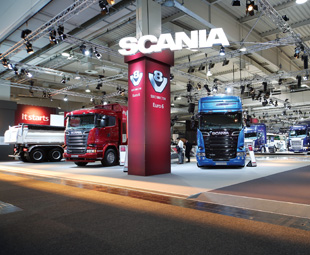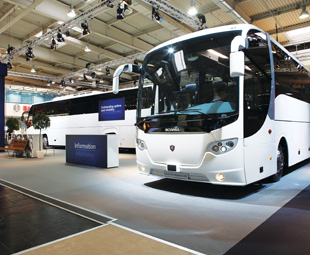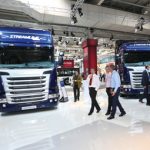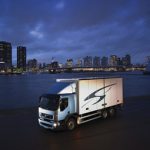Making sense of the sustaina(bab)ble

The world used to chase profit at all costs – regardless of the environmental impact. Then it jumped on the “green” fad, despite the revenue knock … However, Scania’s stand at this year’s IAA, showed that you don’t have to sacrifice one for the other – they actually work very well together
Says Henrik Henriksson, executive vice president and head of sales and marketing at Scania: “It’s clear to us that our industry needs to take a greater responsibility and lead the change towards sustainable transport.”
He adds: “At Scania, a truck or bus is viewed as a piece of production equipment. It is there to make money and to create efficiency in the transport flow.” Henriksson points out that the company looks at what it takes to make its customers profitable …
“Profitable customers are sustainable,” he emphasises. “The manufacturers who best manage to meet customers’ needs for increased capacity and reduced environmental impact will be tomorrow’s winners.”
This was highlighted by Scania at its IAA stand. For example, on show was the hybridised version of the Scania Citywide, which is also able to run on 100 percent biodiesel. “The combination of hybrid and biodiesel is really bringing down CO2 emissions to levels that have never been heard of before,” Henriksson points out.
“The Citywide also offers low entry, which means that this vehicle is suitable for use in dense traffic in the city centres, as well as in suburban areas,” he adds. This is what makes this hybrid bus sustainable …
 “There is a misconception that hybrids only work in dense city traffic,” says Henriksson. He adds that if you combine the hybrid function with the low entry – making the vehicle suitable for both inner-city travel and suburban areas – the picture changes, as operators can now reach payoff in five years (including battery replacement) instead of seven years. “This means that hybrids can stand on their own merits; with a five-year payoff, it starts to make sense.”
“There is a misconception that hybrids only work in dense city traffic,” says Henriksson. He adds that if you combine the hybrid function with the low entry – making the vehicle suitable for both inner-city travel and suburban areas – the picture changes, as operators can now reach payoff in five years (including battery replacement) instead of seven years. “This means that hybrids can stand on their own merits; with a five-year payoff, it starts to make sense.”
The Citywide isn’t, however, the only crossbreed commercial vehicle on which the company is focusing; it is also well on the way to developing hybrid trucks for urban settings. “It is no secret that Scania has already come a long way in this area and that we are working closely with a number of leading players in battery and control engineering for trucks,” says Christopher Podgorski, Scania’s senior vice president of trucks.
“It is also well known that there are challenges if you choose to be thorough and accurately calculate the costs together with the disadvantages caused by complexity and weight, and compare them with the environmental benefits,” he continues. “Hybrid technology is absolutely going to happen for a number of truck applications, but exactly how broadly it will be applied in trucks with today’s technology remains to be seen.”
The company has also embraced the conventional combustion route. “Right here at IAA we have 18 Euro-6 engines for trucks in our portfolio,” said Joel Granath, head of product management for Scania Trucks. “The latest addition, a 13-litre, six-cylinder with 450 hp (335 kW) and SCR-only, represents Scania’s third generation of Euro-6 diesels. This is an indication of where Scania is heading – it brings lowered fuel costs (of about 1,5 percent), together with reduced complexity due to the SCR after-treatment.”
He adds that Scania’s Euro-6 range is clear evidence of how the company’s modular design principles benefit its customers. “Using only three basic engine types that share important components, we can cover a range of 250 to 730 hp (185 to 545 kW).”
Granath states that low fuel consumption is Scania’s clearest customer promise. “There is, however, no single silver-bullet solution for conserving fuel,” he points out. “We are accomplishing real differences, but it’s all about adding up the effect of many small steps to achieve great reductions. Continuous improvements are a part of our philosophy and the struggle for reduced fuel consumption is ongoing at Scania.”
Henriksson adds: “Today, all kinds of customers are chasing profitability by reducing operating costs, regardless of whether their business is about transporting goods or passengers.” And, with Scania lending a helping hand, this is completely achievable.
Published by
Focus on Transport
focusmagsa




